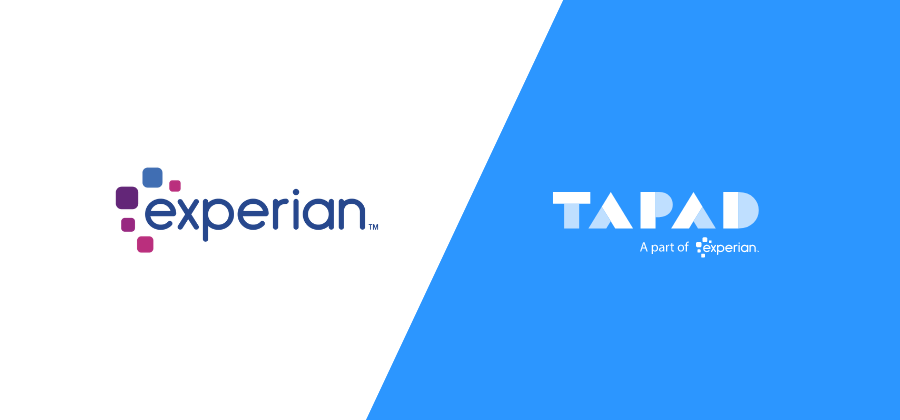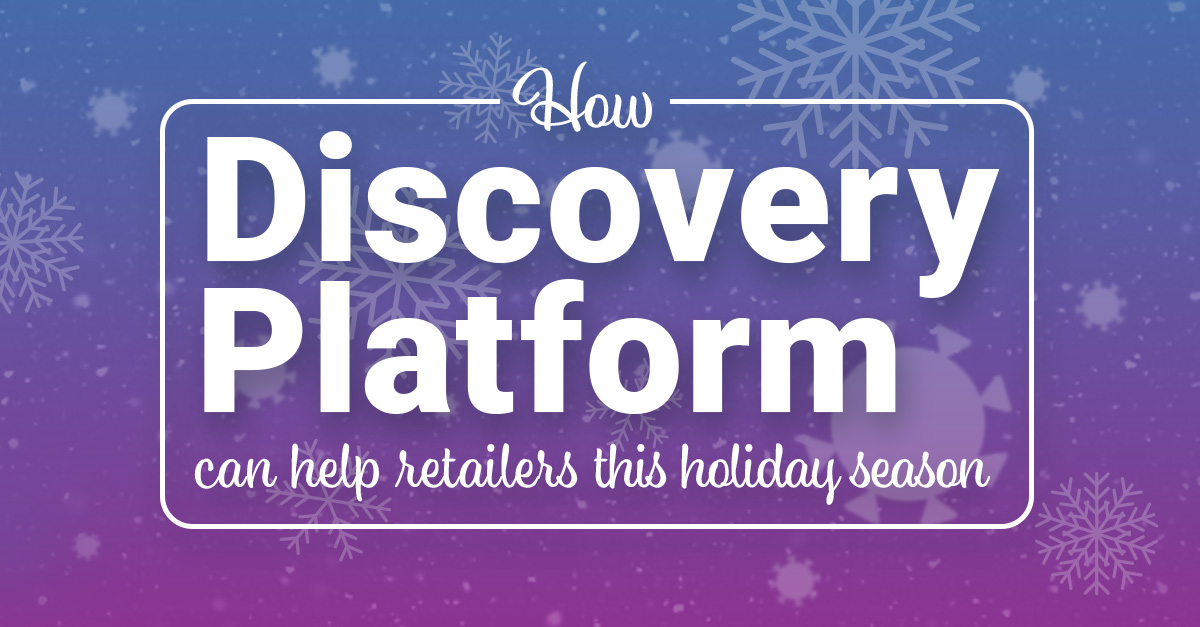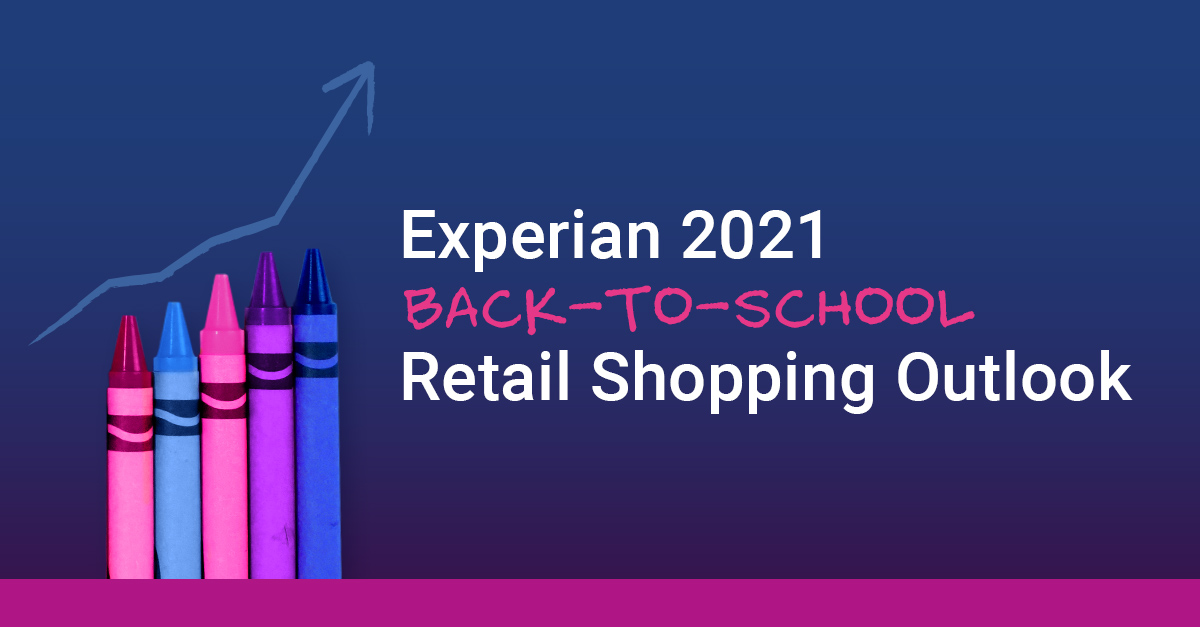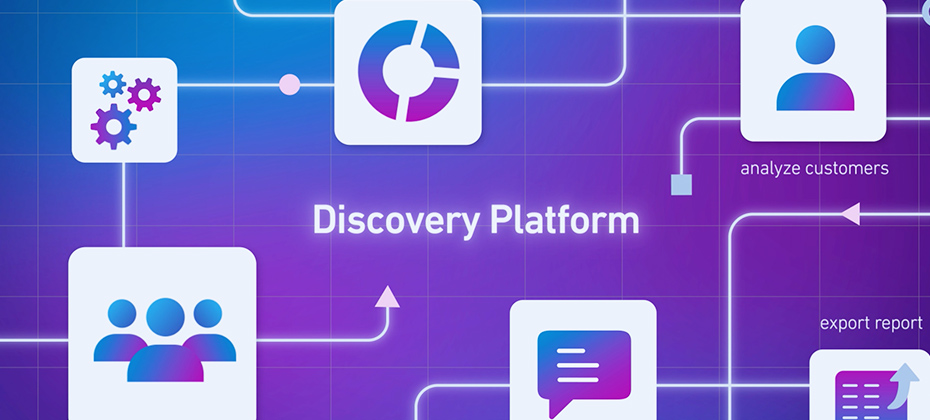All posts by Experian Marketing Services

Fluctuation in consumers' behaviors and preferences during the pandemic has prompted a shift in the practices and patterns that we are accustomed to. Powerful market forces are emerging as society builds a new normal, forcing marketers to rethink their strategy, activation, and measurement. It is important for marketers to understand the forces that influence the industry, and to learn about alternative approaches that can be applied to help reach their goals. In our recent webinar, ‘How to Adjust to the New World of Advertising,’ Experian’s Chris Feo and guest speaker Tina Moffett, Principal Analyst at Forrester Research, lead an in-depth discussion of the market dynamics and developments guiding us to this new era of advertising. They talked about: The pandemic changing consumer behavior Emerging media channels Data deprecation The pandemic and increased media consumption The pandemic caused seismic shifts in consumer behaviors and business operations. Work from home became the norm, consumers made drastic changes in their routines, and businesses had to adjust to new operating models as local economies shrank and supply chains strained. As stay-at-home orders were put into effect, consumers increased their media consumption drastically as more time was spent at home in front of their devices. According to Forrester, by June 2020, 48% of US online adults subscribed to at least one streaming service, while 34% had signed up for multiple. Forrester contends that: Social and online video/OTT will grow fastest among other categories of ad spend Connected TV outpaces other video advertising channels 55% of consumers plan to continue watching movies at home rather than in theatres after the pandemic Data deprecation The ways that marketers can personalize content and measure the effectiveness of campaigns is changing with data deprecation. Consumer preferences, regulations, and technology providers are evolving the way advertisers understand consumers, causing changes to existing identity-based marketing strategies. According to Forrester, 66% of marketers are investing in first-party data collection strategies to adapt to these market forces. Marketers need to adjust Demand for a new advertising approach Changes in consumer behavior, evolving media consumption patterns, and data deprecation have marketers looking at new approaches to targeting and measurement. However, with the future uncertain in many of these areas, marketers need to test and experiment to determine which approach is best for them in particular use cases. Shifting to a new world of experimentation Advertisers need to start by assessing their current environment to determine where they have exposure today, which methods of identification they are using, and how those channels may be impacted by the market forces outlined earlier. From there, they need to start asking themselves how they can assess identity in the future or if there is another way to approach advertising in that specific channel. There are specific areas where marketers can look to make investments in terms of experimentation: Adoption of cleanrooms to support analytics and audience targeting Investment in first-party data to overcome the issue of data deprecation Shifting to a value-based, omni-channel advertising mindset to address customers’ needs Investment in data-savvy resources to manage media insights Adoption of consistent cross-platform advertising metrics and currencies to inform better planning If you missed our recent webinar ‘How to Adjust to the New World of Advertising,’ you can listen to the full discussion here.

Identified in The 2021 Digital Advertising Trends Report published by Postclick, marketers are striving to improve and enhance their segmentation and targeting strategies in their digital ad campaigns. Carlos Lopez, SVP of Brand Planning at Digitas Health predicted that in 2021, the challenge will be to overcome the death of third-party cookies and still deliver a personalized advertising experience. It’s fair to say that his prediction will still be impacting marketers past 2021 with the delay of cookie deprecation. These goals along with the constantly changing digital landscape paint a challenging picture for even the most advanced marketers. Marketers can be prepared for the next era of digital marketing by finding the right mix of partners that offer privacy-safe, cookie-free solutions. Smart marketers will employ these solutions and compare these results with data from cookies. The Tapad + Experian Take The Tapad Graph enables brands, agencies, and ad tech platforms to identify and target individuals and households across their digital touchpoints. With this data, they can personalize messages across devices, measure and optimize throughout the customer journey, and then report back on conversions at the individual and household levels. Tapad, now part of Experian, leverages a machine learning algorithm that determines these connections at scale by using probabilistic models with authenticated, privacy-safe, real-time data. There are a myriad of cookieless IDs emerging in the marketplace, and it’s not likely going to be a one size fits all situation. In order to be prepared for the next era of digital marketing, marketers should diversify ID partners and be proactive with testing while the cookie is still around to benchmark against. With Switchboard, a module within The Tapad Graph, we’ve been able to develop connections between traditional digital identifiers (IP Addresses, MAIDs, CTV IDs) and the new wave of cookieless IDs (UID2.0, Panorama ID, ID5 ID) that will be utilized in the future. Here’s an example of what The Tapad Graph and Switchboard looks like at the Household level with various traditional digital identifiers and cookieless IDs. Get started with The Tapad Graph For personalized consultation on the value and benefits of The Tapad Graph for your business, email Sales@tapad.com today!

Identity is being constrained, forcing the industry to rethink the way it has operated for 27 years. Industry, regulatory, technology and data trends are leading to a fundamental shift in the way that data is permissioned, accessed, and used for marketing purposes. How the industry defines digital identity moving forward, consumer trust and transparency need to be at the forefront. We, as an industry, have the opportunity to build a more effective advertising framework that puts consumers and data privacy at its core, a framework that won’t rely on a single prevailing identifier. That approach requires all of us to be upfront and transparent about our data practices and usage and make it easy for consumers to opt-out of the use of their information for advertising and marketing solicitations. We, at Experian, also believe that there are a lot of ways to improve the experience for consumers, who are becoming more aware and apprehensive of giving away their data. We believe we can ease the minds of consumers and work within these new constraints by offering better controls and practices around the ways data is shared and utilized. There will be new approaches that come to the market as well that include modeled, non-identifiable information, cohorts, contextual

It’s no secret that the COVID-19 Delta variant is threatening holiday plans across the country. As CDC mandates change and the flu season matures, we’re asking big questions that impact businesses and marketers across the country: Will customers mostly stay at home and order online? Or will people drive to the store and fly to family gatherings? The answer is probably both—but, as we’ve learned, a lot can change overnight. And we want to be prepared this time around. While many of us make vacation plans with a “wait and see” attitude, we want firmer footing at work. To cope with uncertainty, holiday marketing strategies straddle assumptions and require agility. To protect some of the biggest campaigns of the year, marketers need the ability to: Monitor changing customer behaviors during flu season. Track marketing KPIs for campaign performance and quick adaptability. Pivot audience targeting strategy when safety guidelines change. We built Discovery Platform to give you all three so that you can execute your marketing strategy with confidence. Discovery is built on top of robust consumer data and the best-in-class Identity graph that Experian is known for. It offers turn-key activation capability to keep your marketing campaigns agile and efficient this holiday season. Here’s how you can use Discovery Platform to protect your marketing interests from rapidly changing safety guidelines. Track store traffic against competitors Discovery Platform enables Experian clients to keep a tap on their store traffic and relate it to how competitors and overall business category is doing. Monitoring these trends can help marketers adapt to changing consumer behaviors as flu season evolves. Track marketing KPIs Tracking and adjusting ongoing campaign targeting strategy remains a top priority throughout the pandemic, especially during colder, winter months. Discovery enables you to evaluate your campaign targeting strategy in relation with your loyalty card shoppers and in-flight campaign KPIs to drive higher return on ad spend and Customer Lifetime Value. With Discovery’s OmniImpact integration clients can even conduct control test measurement studies. Pivot campaigns quickly You can use Discovery’s Audience Engine integration to build and deploy custom audiences to social, digital, email and Connected TV partners. This gives you the ability to quickly pivot campaign channels once you detect changes in consumer behavior or dips in campaign performance. The sales and customer data flowing into Discovery Platform puts all the insights you need in one place to inform your team’s next marketing strategy. Watch our Discovery Platform demo or contact us to learn how Experian can help you create more effective, agile marketing campaigns for the holidays.

The result of epic shifts from traditional cable to streaming television, the CTV ecosystem is experiencing compounded fragmentation, making it challenging for marketers to leverage in the most effective way for both activation and measurement. Heralded as the hot new household level device for highly engaged viewers, CTV brings massive opportunities for brands to move users down the funnel and incorporate CTV into their attribution modeling post-campaign. Leveraging CTV IDs within a cross-device identity resolution strategy can yield big benefits if you know how to do it right. Check out our breakdown of today’s CTV landscape to help you better understand how and what you can leverage for activation and measurement in the streaming-verse today. CTV Ecosystems as identifiers (for illustrative purposes only) This is just a small peak at the players and complexities of CTV IDs available for marketers today, but it illustrates the need to understand what IDs can benefit your strategies and where you can use them. Addressability and attribution Not all CTV devices and IDs are addressable; or have ad slots for biddable inventory for advertisers. For example, Apple TV devices and Apple TV + are not ad supported, but could still appear within an identity graph for measurement purposes; helping understand customer behavior and habits, which can inform marketing strategies. Having a household to individual view that's as inclusive as possible can provide valuable insights. CTV identity strategy Whether or not CTV devices or apps are addressable for advertisers, they can bring immense value when leveraged as part of a holistic identity resolution strategy. As a household level device with user authentication it can provide marketers a top-down view; unlocking household:individual targeting opportunities and unification of IDs at both levels for frequency management and customer journey mapping Get started with us Tapad, part of Experian, offers CTV ID onboarding and extension to our CTV ID Universe as a part of The Tapad Graph suite of products. To learn more about how The Tapad Graph can support your business objectives through future-proof identity resolution visit Tapad.com or email sales@tapad.com to connect with a representative today.

Third-party data has become the cornerstone to improve marketing effectiveness across all types of online and offline media. Consumer packaged goods (CPG) marketing faces a challenge when utilizing this data, as sales are often made through distributors such as grocery stores or mass merchandisers rather than directly to consumers. Without customer data files that can be enriched for insight, CPG companies often base marketing decisions on custom market positioning studies, surveys and generic consumer personas. These solutions can be quite expensive and prove difficult to develop a targeted marketing program. Optimize your CPG marketing strategy We have a team of experts that leverage the wealth of our database of thousands of attributes covering more than 300 million U.S. consumers and 130 million U.S. households—to identify the demographics and attitudes of a CPG target consumer using syndicated, mobile location, social media, and online behavioral data. We help connect various data points to provide CPG marketers with the ability to identify likely consumers, generate actionable marketing insight, and enable targeted advertising to these consumers that increases brand awareness and drives purchase behavior. Identifying likely consumers for consumer packaged goods To gain marketing insight about your customers, you need to identify consumers who are actively engaged with your brand, and compare them against non-engaged consumers, or consumers engaged with rival brands. Experian uses syndicated and digital actions data to identify these consumers and understand their characteristics. With digital actions data, we leverage search terms and landing pages relevant to your brand. We use our linking capabilities to identify the perfect target audience for your marketing initiatives. For example, we leveraged syndicated data that showed consumer preference for frozen meals based on household characteristics. This enabled our client to better understand the market size and attributes of its active consumers. Actionable CPG marketing insight Once marketers identify who their optimal target consumer is, they can begin to understand their ideal audience and compare it to consumers of competitive brands. This helps identify key demographics and psychographics that over-index to users of the brands compared to the population. As a result, you can gain a much better understanding of the demographics, life stage and lifestyle of your target consumer. We also help you to better inform your marketing communication and media and distribution strategies by identifying the channels your ideal audience is most likely to be found. Getting back to our example, consumers of frozen foods were found more likely to be females between the ages of 35-54 with busy families. They had multiple children in the home and participated in family activities, like zoos and fast-food dining. We were then able to identify the digital channels they were more actively engaged with and determine factors that influence their decision-making, such as product quality or consumer testimonials. By gaining insight into your target audience, you can create digital communication focused on specifics, like an active family looking for a quality meal. Turning insights into action by enabling targeted advertising With a better understanding of your target consumer, and the insight needed to catch their attention, you can unify your ideal target audience and serve advertising that builds brand awareness and increases conversion. Our Custom Analytics team uses advanced analytical techniques to create custom consumer personas. Our database of 130 million U.S. households is scored with a proprietary algorithm created specifically for your organization and creates audiences that are pushed to the preferred marketing channel of your target consumers. Leveraging our ConsumerView database, we can easily enable direct communication to your targeted consumers (such as our example that identified consumers of frozen food and their preferred channels) through direct mail, email, digital display, social media and mobile channels. We work directly with agencies to deploy an audience to a destination and can manage a campaign for our CPG clients. We can even help you determine campaign success by measuring campaign performance versus a relevant control, and profiles converters to help you see gains made in brand awareness to target consumers. These services give you the ability to test an advertisement directly to targeted consumers, measure the effectiveness of the advertisement, then plow back the learnings into future campaigns, enabling greater consumer brand awareness and conversion while managing marketing effectiveness. Experian is here to help We have worked extensively with a variety of CPG companies to improve marketing effectiveness and drive brand awareness. We can help your organization take your marketing campaigns to the next level. Our data assets and advanced analytics generate actionable insights that enable you to identify and communicate with consumers more effectively. For more information about how we can help your organization gain valuable insights to identify your ideal customers and the best channels to reach them, contact us.

Marketers are always challenged to expand sales beyond “business as usual,” while being good stewards of company resources spent on marketing. Every additional dollar spent on marketing is expected to yield incremental earnings—or else that dollar is better spent elsewhere. You must be able to determine return on advertising spend (ROAS) for any campaign or platform you add to your marketing mix. A key driver of positive ROAS is incremental customer actions produced by ad exposure. Confident, accurate measurement of incremental actions is the goal of an effective testing program. Why do we test campaign performance? Because demonstrating incremental actions from a campaign is a victory. You can keep winning by doing more of the same. Not finding sufficient incremental actions is an opportunity to reallocate resources and consider new tactics. Uncertainty whether the campaign produced incremental actions is frustrating. Ending a profitable marketing program because incremental actions were not effectively measured is tragic. Test for success When you apply rigorous methods to test the performance of campaigns, you can learn to make incremental improvements in campaign performance. The design of a marketing test requires the following: Customer Action to be measured during the test. This action indicates a recognizable step on the path to purchase: awareness, evaluation, inquiry, comparison of offers or products, or a purchase. Treatment, i.e., exposure to a brand’s ad during a campaign. Prediction regarding the relationship between action and treatment (e.g., Ad exposure produces an increase in purchase likelihood). Experimental design is the structure you will create within your marketing campaign to carry out the test. Review of results and insights. Selecting a customer action to measure Make sure that the customer action you measure in your test is: Meaningful to the campaign’s goal. What is the primary goal of the campaign? Is it brand awareness? Web site visits? Inquiries? Completed sales? An engagement by the customer. Your measurement should capture meaningful, deliberate interaction of consumers with the brand. Attributable to advertising. There should be a reasonable expectation that ad exposure should increase, or perhaps influence the nature of customer actions. Abundant in the data. Customer action should be a) plentiful and b) have a high probability of being recorded during the ad campaign (in other words, a high match rate between actions and the audience members). Selecting campaign treatments It is best for treatments to be as specific as possible. Ad exposures should be comparable with respect to: brand and offer, messaging, call to action, and format. Making a prediction This is the “hypothesis.” Generally, you assume that exposure to advertising will influence customer actions. To do this, you need to reject the conclusion that exposure does NOT affect actions (the “null hypothesis”). Elements of an experimental design An attribution method that links each audience to their purchase action during the test. This consists of a unique identifier of the prospect which can be recognized both in records of the audience and records of the measured action during the measurement period. A target audience that receives ad exposure. A control audience that does not receive ad exposure. It provides a crucial baseline measurement of action against which the target audience is compared. Time boundaries for measurement, related to the treatment: Pre-campaign Campaign Post-campaign Randomly selected audiences (recommended) Some audience platforms, such as direct mail and addressable television operators, feature the ability to select distinct audience members in advance. Randomly selected audiences can generally be assumed to be similar in all respects except ad exposure. The lift of the action rate is simple to calculate: Campaign Lift = (Action Rate (target) / Action Rate (control)) -1 Non-randomly selected audiences are more difficult, but still possible, to measure effectively. There may be inherent biases between them that may or may not be obvious. To measure campaign performance, we must first account for any pre-existing differences in customer actions, and then adjust for these when measuring the effect of ad exposure. Typically, the pre-campaign period (and possibly the post-campaign period as well) are used to obtain a baseline comparison of actions between the two audiences. This is a “difference of differences” measurement: Baseline lift = (Action Rate (target) / Action Rate (control)) -1 Campaign Lift = (Action Rate (target) / Action Rate (control)) -1 Net campaign lift (advertising effect) = Campaign Lift – Baseline Lift Analyzing results and insights How large is the lift? This is generally expressed as a percentage increase in action rate for the target audience vs. the control audience. Are we confident that the lift is real, and not just random noise in the data? This question is answered with the “confidence level.”. 95% confidence means the probability of a “true positive” result is 95%; and the probability of a “false positive” due to random error is 5%. What was the campaign cost per incremental action? If you also know the expected revenue from each incremental action, you can project out incremental revenue, from which you can calculate return on ad spend. Other insights: Do the results make directional sense (we would hope that ad exposure will cause an increase in customer actions, not a decrease)? Does action rate generally increase with the number of ad exposures? Summary Well-designed testing and measurement practices allow you to learn from individual advertising campaigns to improve decision-making. The ability to draw confident conclusions from campaigns will allow experimentation with different strategies, tactics, and communication channels to maximize performance. These test-and-learn strategies also enhance your ability to adjust to marketplace trends by monitoring campaign performance. To learn how Experian’s solutions can help you measure the success of your marketing campaigns, watch our short video, or explore our measurement solutions.

As kids are packing their new backpacks and heading back to school, search trends and online behavior give insights about the things students (and their parents) care about this year.

Imagine an experiential self-driving car of the future. You step inside, select where you want to go and the best experience within the vehicle for your journey. Within seconds, it safely sweeps you away and drives you to your destination. If only marketing were that easy. At the tap of a console, you are able to identify the best parachute to glide your ads to the right audience, on the right platform. Well, what seems like a distant dream is Experian Marketing Service’s latest solution: Discovery Platform. To introduce Discovery, we asked Sunaina Chaudhary, Director of Product and Innovation, to describe how the solution facilitates effective marketing strategies. Discover more about your consumers. What is Discovery? What marketing challenges does it address? Anywhere you feel like you need to understand your customers, Discovery Platform can help. Whether you want to take your marketing to the next level or get on the road to recovery, Discovery is the solution. We created the Discovery Platform to help our clients overcome today’s advertising challenges, including gaps in data that impede identity linkage, limited internal resources and fragmented data. Think about all the touchpoints surrounding a customer in real life: connected TV ads, social media, email, flyers, digital ads . . . You can probably think of at least 15 off the top of your head. Discovery brings all those touchpoints together into a unified view of your customer. It combines disparate data insights to help you better understand your customers’ individual journeys and the most impactful touchpoints across offline, social and digital channels. Speaking specifically to a use case, in the most simplistic words, marketers can use Discovery to identify the right consumer, plan to reach them through the most optimal channel and create a consistent, relevant and personalized message. You can even leverage Discovery Platform’s seamless integration with our Audience Engine solution to build and deploy custom audiences to a variety of social, digital, email and Connected TV partners. The sales and other customer data flowing back into Discovery, all ties together for the marketing team to inform the next marketing campaign or strategy. Watch the Discovery Platform demo to learn more. Which business verticals does it benefit? Discovery Platform is apt for almost every vertical that I can think of - retail, agency, connected TV, publishers and financial institutions. Even though agencies don’t typically own first-party data, they can still benefit from Discovery through a one-stop shop for their RFP needs and the ability to activate the same audience with a click of a button. Clear cohorts you can activate—without privacy anxiety. Do marketers need to worry about consumer data privacy in the Discovery platform? No, when you’re in Discovery, you’re seeing the best and safest view of your customer cohorts. Marketers can rely on Experian to meet all compliance, governance and privacy standards. That’s taken care of by the time you see the data. Discovery is built on carefully curated and maintained data on 126 million households and 300 million individuals. You can leverage it for insights on over 2,000 consumer attributes such as demographics, home-owner status, shopping behaviors, media consumption habits and more. These are all tied to a unified identity made possible by our identity linkage. To do this, we help pull together your first-party data—along with whatever Experian datasets you license—to create a complete picture of your customer cohorts. It’s always-on, actionable insights you can subscribe to. What most excites you about the Discovery platform? We live in a world full of subscriptions—from TV streaming to food delivery. Data solutions of the past are transactional: you buy consumer data, leave it, and need to update it next week, month or quarter. Marketers have an ongoing need for more up-to-date data. That’s why we built Discovery Platform. World-class marketers need to be proactive when it comes to their customers and their business, which means having access to always-on actionable insights and analytics. Experian’s Discovery platform is here to make recurring market insights safer to access, and easier to collect and put into action. Here are 3 ways you can put Discovery to work for your marketing strategy: Subscribe! You get data-backed insights when you need them to stay up to date on what's happening with your business, customers and campaigns. For example, through mobile location data you can see which geographic areas of your market are returning to stores or still shopping online, glimpse competitor market share and more. Connect insights to your campaign. Discovery Platform is seamlessly integrated with Audience Engine to turn insights into action. This allows you to engage with your audiences via email, social, display, connected TV or whatever channels they prefer. Request a report. Not ready to subscribe? You can still get valuable on-demand reports, whether you have one or 25 target markets. Tell us your audience selection criteria, pick datasets for rich insights and Experian Marketing Services will give you actionable marketing insights for your business. Sign up for our newsletter to receive quarterly updates on what’s new at Experian Marketing Services.